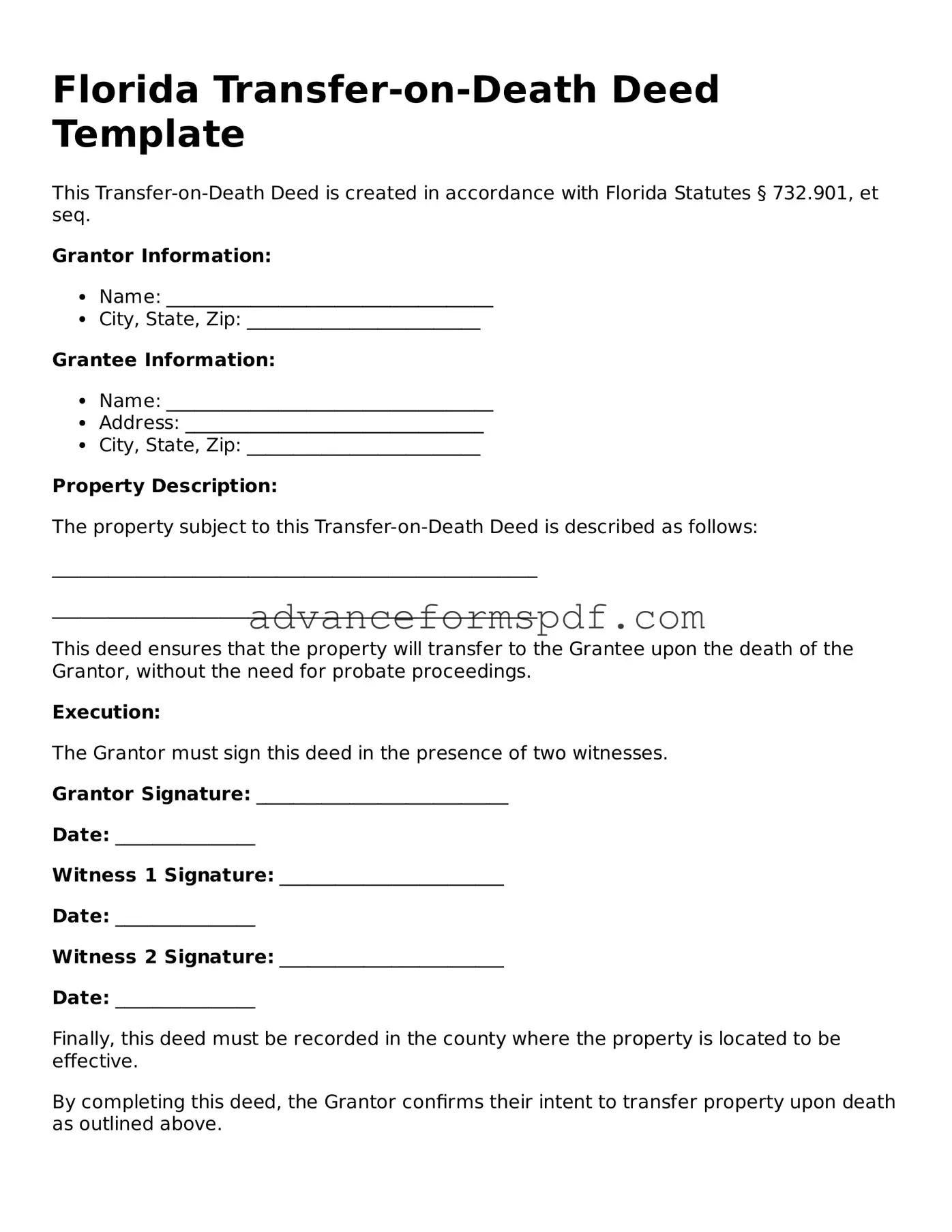Florida Transfer-on-Death Deed Template
This Transfer-on-Death Deed is created in accordance with Florida Statutes § 732.901, et seq.
Grantor Information:
- Name: ___________________________________
- City, State, Zip: _________________________
Grantee Information:
- Name: ___________________________________
- Address: ________________________________
- City, State, Zip: _________________________
Property Description:
The property subject to this Transfer-on-Death Deed is described as follows:
____________________________________________________
____________________________________________________
This deed ensures that the property will transfer to the Grantee upon the death of the Grantor, without the need for probate proceedings.
Execution:
The Grantor must sign this deed in the presence of two witnesses.
Grantor Signature: ___________________________
Date: _______________
Witness 1 Signature: ________________________
Date: _______________
Witness 2 Signature: ________________________
Date: _______________
Finally, this deed must be recorded in the county where the property is located to be effective.
By completing this deed, the Grantor confirms their intent to transfer property upon death as outlined above.
